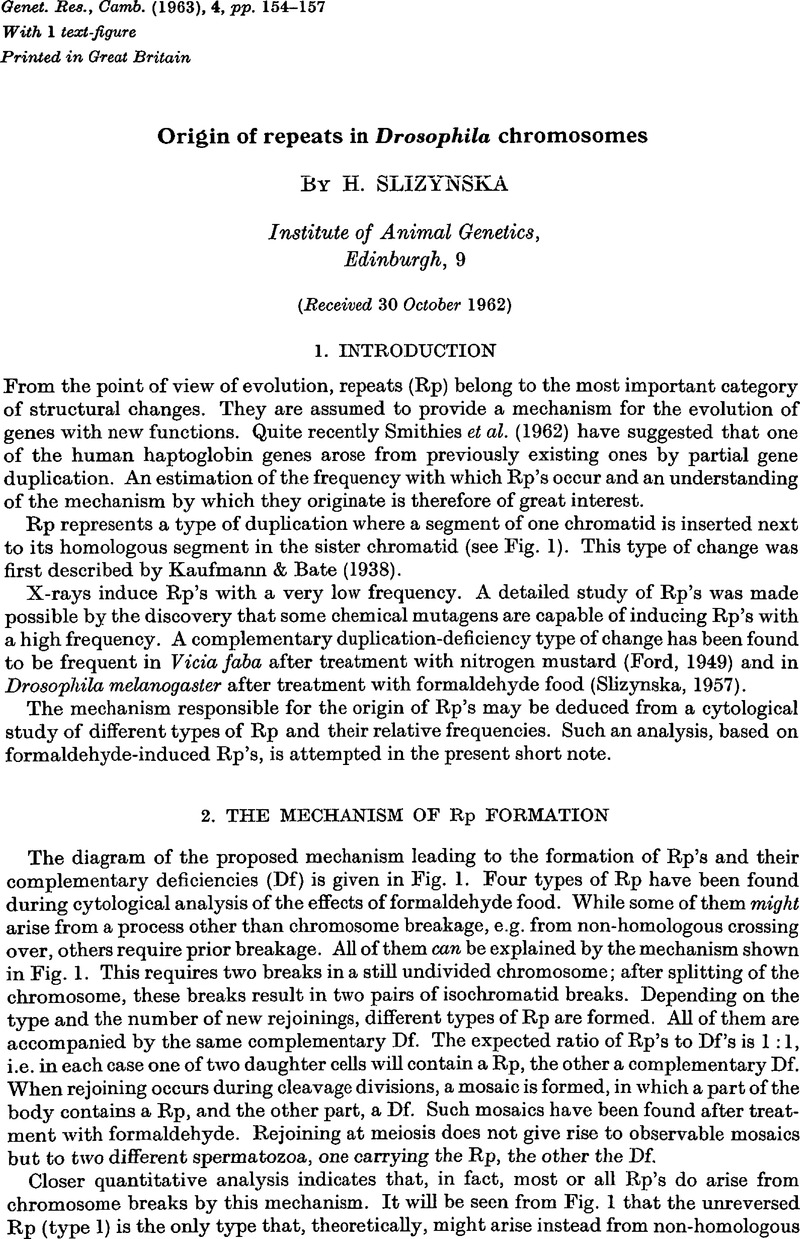Crossref Citations
This article has been cited by the following publications. This list is generated based on data provided by Crossref.
Slizynska, H.
1963.
Heterogeneity among spermatogonia ofDrosophila melanogasterin sensitivity to X-rays.
Genetical Research,
Vol. 4,
Issue. 3,
p.
446.
Slizynska, H.
1963.
Mutagenic effects of X-rays and formaldehyde food in spermatogenesis of Drosophila melanogaster.
Genetical Research,
Vol. 4,
Issue. 2,
p.
248.
Mathew, C.
1964.
The nature of delayed mutation after treatment with chloroethyl methanesulphonate and other alkylating agents.
Mutation Research/Fundamental and Molecular Mechanisms of Mutagenesis,
Vol. 1,
Issue. 2,
p.
163.
RIEGER, RIGOMAR
and
MICHAELIS, ARND
1965.
Chemical Induction of Heat-reversible ‘Potential Lesions’ in Vicia faba Chromosome.
Nature,
Vol. 206,
Issue. 4985,
p.
741.
Slizynski, B. M.
1967.
Oocyte pachytene analysis of Cattanach's fd translocation.
Genetical Research,
Vol. 9,
Issue. 1,
p.
17.
Nasim, Anwar
1967.
The induction of replicating instabilities by mutagens in Schizosaccharomytes pombe.
Mutation Research/Fundamental and Molecular Mechanisms of Mutagenesis,
Vol. 4,
Issue. 6,
p.
753.
Watts, R.L.
and
Watts, D.C.
1968.
The implications for molecular evolution of possible mechanisms of primary gene duplication.
Journal of Theoretical Biology,
Vol. 20,
Issue. 2,
p.
227.
Slizynska, H.
1968.
Triplications and the problem of non-homologous crossing-over.
Genetical Research,
Vol. 11,
Issue. 2,
p.
201.
Slizynska, H.
1969.
The progressive approximation, with storage of the spectrum of the tem-induced chromosomal changes in Drosphila sperm to that found after irradiation.
Mutation Research/Fundamental and Molecular Mechanisms of Mutagenesis,
Vol. 8,
Issue. 1,
p.
165.
Slizynska, Helena
1973.
Cytological analysis of storage effects on various types of complete and mosaic change induces in Drosophila cromosomes by some chemical mutagens.
Mutation Research/Fundamental and Molecular Mechanisms of Mutagenesis,
Vol. 19,
Issue. 2,
p.
199.
Sobels, F.H.
1975.
Charlotte auerbach and chemical mutagenesis.
Mutation Research/Fundamental and Molecular Mechanisms of Mutagenesis,
Vol. 29,
Issue. 2,
p.
171.
Sobels, F.H.
1975.
Radiation Research.
p.
958.
Auerbach, Charlotte
1976.
Mutation research.
p.
256.
Sobels, F.H.
and
Vogel, E.
1976.
The capacity of Drosophila for detecting relevant genetic damage.
Mutation Research/Fundamental and Molecular Mechanisms of Mutagenesis,
Vol. 41,
Issue. 1,
p.
95.
Auerbach, C.
Moutschen-Dahmen, M.
and
Moutschen, J.
1977.
Genetic and cytogenetical effects of formaldehyde and related compounds.
Mutation Research/Reviews in Genetic Toxicology,
Vol. 39,
Issue. 3-4,
p.
317.
Leigh, B.
1978.
The formation and recovery of two-break chromosome rearrangements from irradiated spermatozoa of Drosophila melanogaster.
Mutation Research/Fundamental and Molecular Mechanisms of Mutagenesis,
Vol. 49,
Issue. 1,
p.
45.
Geer, B.W.
Reno, Donna
and
Andersen, Corine
1981.
Nutrient deficiency and the sensitivity of Drosophila melanogaster to an alkylating agent.
Nutrition Research,
Vol. 1,
Issue. 2,
p.
169.
Würgler, F.E.
Sobels, F.H.
and
Vogel, E.
1984.
Handbook of Mutagenicity Test Procedures.
p.
555.
Würgler, F. E.
and
Graf, U.
1985.
Basic and Applied Mutagenesis.
p.
343.
Kastritsis, C. D.
Scouras, Z. G.
and
Ashburner, M.
1986.
Duplications in the polytene chromosomes of Drosophila auraria.
Chromosoma,
Vol. 93,
Issue. 4,
p.
381.



